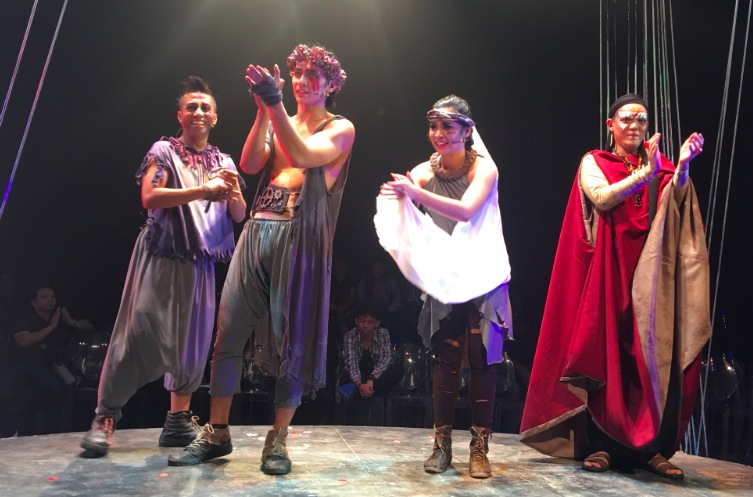
REVIEW: Art Theatre Manila debuts strong with “Sakuntala”
A new company kicked things off with a bang by choosing to adapt one of the world’s most popular epics to the local stage. It was an impressive undertaking for Joey Ting-led Art Theatre Manila to have staged a production of such magnitude as a portion of the Mahabharata for its debut.
Allan Palileo does the formidable task of adapting the Sanskrit epic by Kalidasa to spoken lyrical Filipino poetry. “Sakuntala” focuses on the love story between King Dusyanta and hermitage princess Sakuntala. Their love story begins when Dusyanta goes hunting in a sacred hermitage and falls in love with Sakuntala the moment he sees her. Paul Cedrick Juan emanates with majestic stage presence as he plays a magnetic Dusyanta, opposite a charismatic Matel Patayon who plays the confident-turned-heartbroken Sakuntala.
Juan and Patayon’s palpable chemistry brings this show to new heights, proven by the inappropriate yet highly telling shrieks of the predominantly student audience when the two finally kiss and profess their love in a beautiful pas de deux choreographed by JM Cabling. They get married in secret, and when Dusyanta goes back to his kingdom, he gives Sakuntala a ring as a promise of his return. She gets pregnant, and because of a spell from a sage named Durvasas (Rudyard Pesimo), Dusyanta soon forgets all memory of her.
The story, though, is said to be set in a post-apocalyptic 2080, on a Philippine islet in Palawan, but you wouldn’t really know this unless you read the program. Nothing but the opening sequence where the cast desperately runs around lost in darkness alludes to a dystopia, and the only real reference to Palawan is the act of deer hunting by the king and his comrade. The idea that a remaining civilization would go back to a primeval monarchy in less than a century, where characters do not speak the contemporary language (and bear scrolls with symbols resembling Sanskrit) feels too far-fetched and ultimately feels like a contrived decision to pull in millennial viewers. Men and women acting coy when interacting with each other, dressed in tribal attire in 2080 is simply too unrealistic.
The scenography by Ohm David, marked with a circular platform in the middle of a proscenium-less stage works in most parts, aside from the the introduction, when Durvasas delivers an almost incomprehensible monologue while taking 360 degree turns. For the rest of the show, the audience is made to feel like they’re part of the experience, as the cast constantly moves from the ground to an elevated circular platform, accompanied by the engaging ethnic tribal music by Gian Gianan and captivating lighting design by Meliton Roxas whose magic truly comes alive when the king realizes what he had forgotten.
Taking dystopia out of the picture, “Sakuntala” is a universal love story portrayed by two fine young actors accompanied by a strong, formidable ensemble, making it not only look–but feel–larger than life.

